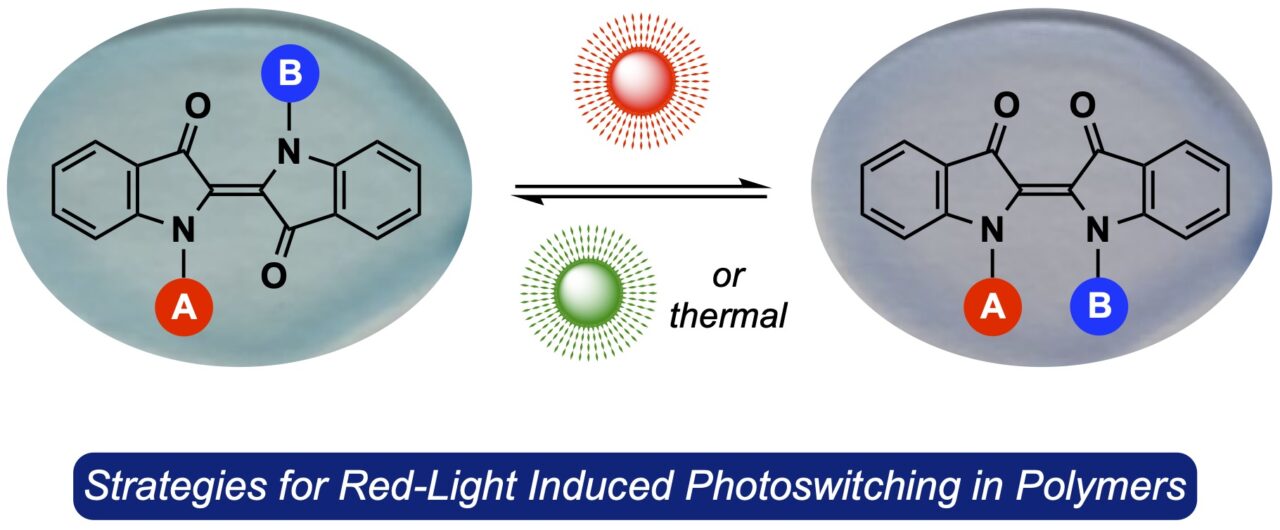
This work was selected as a ChemSci Pick of the Week and is featured on the front cover of the journal.
ICReDD Associate Professor Dennis Chung-Yang Huang collaborated with a team led by researchers at Tampere University in Finland and Humboldt-Universität zu Berlin in Germany to demonstrate that indigo dye derivatives incorporated into organic polymer materials exhibit efficient photoswitching behavior in the solid-state, showing promise for these molecules to be used in smart material or biological applications.
A molecule that reversibly changes structure when exposed to a certain type of light is called a photoswitch. Synthetic modifications can turn indigo dye, a commodity for blue jeans, into a photoswitch activated by red light. This ability to use low energy red light is advantageous since most photoswitches are activated by ultraviolet or high energy visible light, which can damage polymers or biological tissue. While indigo dye derivatives have been shown to act as a photoswitch in solution, this functionality needs to occur in the solid state as well to be used in materials applications.
Researchers studied six different indigo derivatives incorporated into 5 different polymers and found 3 key factors that influence their solid-state photoswitching properties: 1) softer polymers were better able to accommodate the structure change of the indigo derivatives, 2) attaching bulkier side chains to the indigo derivatives created more free space between molecules which enabled a smoother transition between structures, and 3) adding lower amounts of dye reduced aggregation. By optimizing these factors, researchers were able to achieve photoswitching in the solid-state that is as efficient as in solution. This is a rare case of red-light photoswitching in the solid-state and shows the potential of indigo derivatives to be used in smart material and biological applications.
This work was published as a communication in the journal Chemical Science on February 22, 2023.

